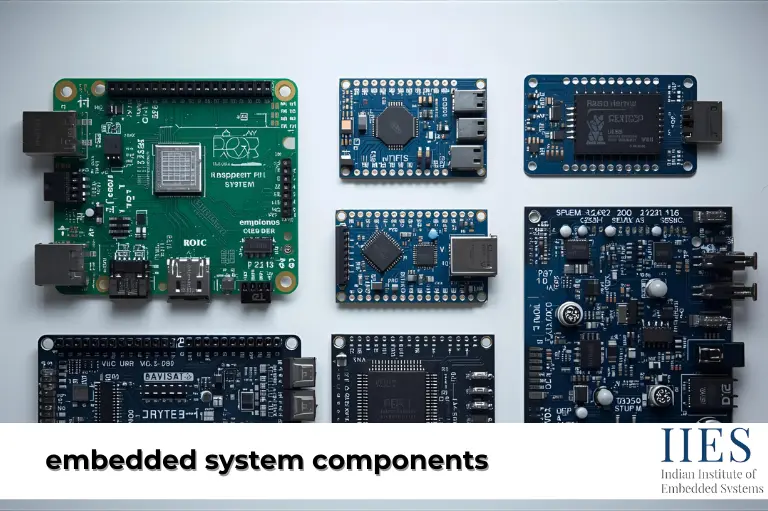
Embedded system components are the hidden engines inside everyday devices, from smartwatches to medical equipment. They work silently in the background, making our gadgets smarter, faster, and more reliable. To understand how these systems function, we need to explore their key building blocks.
Embedded systems are made of core components like microcontrollers, memory, input/output devices, and communication interfaces that work together to control and automate devices.
An embedded system is a mix of hardware components of embedded system and software components of embedded system designed for a specific task. Each block has a clear purpose, and together they bring intelligence to machines. Let’s break down the major components:
The brain of an embedded system lies in its processors. Depending on the application, either a microcontroller or a microprocessor is used to handle tasks and run instructions.
If you’re curious about different controllers used in IoT projects, you can check our detailed guide on [microcontroller types].
Every embedded system needs a reliable way to store instructions and data. Memory provides both temporary and permanent storage for smooth operation.
Some designs also use Flash memory for updates and data logging, an important part of embedded software examples.
Input devices are like the senses of an embedded system. They collect signals from the environment. Examples include:
These inputs guide the system’s decisions and trigger actions, which are essential embedded hardware units.
Output devices let users see or feel the system’s response.
For example, in a washing machine, LEDs show the mode, and the motor drives the drum. One of the main components of embedded system.
To interact with other devices, embedded systems use various communication methods. These interfaces ensure data moves quickly and accurately.
In IoT applications, wireless communication allows devices to send data to the cloud for real-time monitoring.
Some systems must track time accurately. An RTC maintains date and time even when powered off. It’s vital for:
A key part of the 3 main components of embedded system in time-sensitive applications.
Without power, nothing works. Embedded systems may run on:
Power efficiency is a must, especially for IoT devices that need long battery life.
Some embedded systems use an operating system to manage processes. It makes multitasking easier and ensures time-critical tasks run smoothly.
Developers need the right set of tools to design and test embedded systems. These tools simplify programming and reduce errors.
These tools are part of the software components of embedded system.
With growing connectivity, security is now a core building block. Measures include:
This is critical in medical devices, payment systems, and automotive electronics where safety is non-negotiable.
Sensors and actuators allow embedded systems to sense their surroundings and take action. This makes devices responsive and interactive.
Example: In a smart thermostat, sensors measure temperature, and actuators adjust heating/cooling.
Real-world signals are often analog, but embedded systems work in digital form. ADC and DAC help bridge this gap.
These are crucial hardware components of embedded system.
Watchdog timers act like safety guards in embedded systems. If the system stops responding, they reset it automatically to maintain reliability. This feature is critical in medical, automotive, and industrial devices. Examples include embedded hardware units like:
Each building block of an embedded system plays a unique role. When combined, they create powerful, efficient, and reliable devices that run everything from home appliances to advanced IoT solutions.
Together, they form 3 main components of embedded system creating intelligent, task-focused systems.

The building blocks of embedded systems are the foundation of smart technology. From microcontrollers to sensors and security, each block has a vital role in making devices efficient and reliable. These main components of embedded system will continue evolving, powering the next wave of IoT and intelligent machines.
Core components include microcontrollers, memory, input/output devices, communication interfaces, and power supply units.
Microcontrollers integrate CPU, memory, and peripherals in one chip for small tasks, whereas microprocessors require external components and are used for complex tasks.
Memory stores instructions and data for execution, ensuring smooth and efficient operation.
Input devices collect environmental data, and output devices present results to the user or environment.
RTC tracks date and time accurately, even during power-off, essential for logging, scheduling, and timestamping.
Security ensures data protection, authentication, and safe operation in connected and critical applications.
Indian Institute of Embedded Systems – IIES